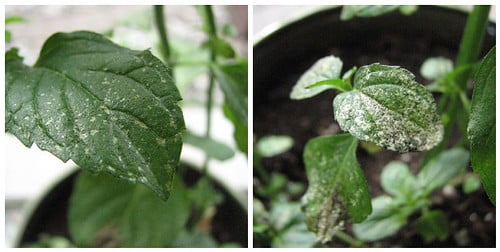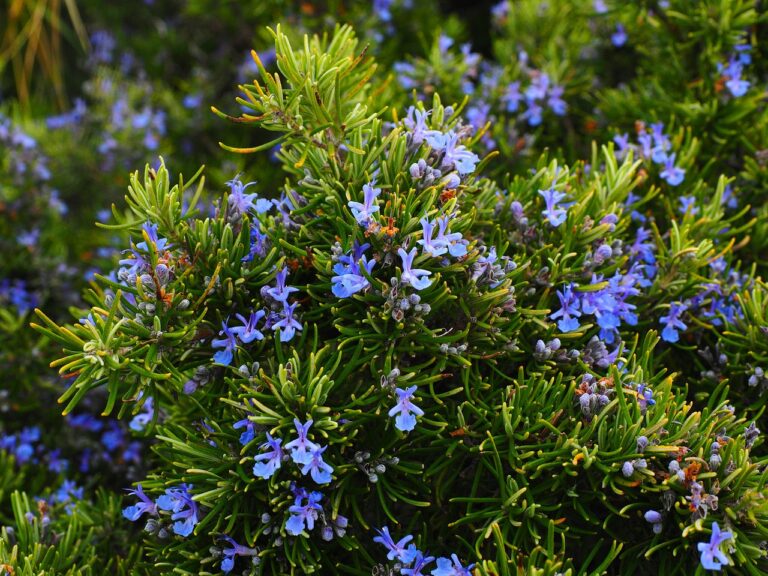Jimbu
Jimbu, a versatile culinary herb, boasts onion and garlic flavors enriching Nepali dishes like lentils, soups, and pickles. It enriches lentil recipes with mild yet robust taste and intensifies soup flavors for complexity. In pickles, it brings tanginess and balance. Rich in essential oils, vitamins, and minerals, it aids digestion and can be used in home remedies. Culturally significant in Nepal, it symbolizes tradition and connects individuals to their roots. To grow, choose sunny well-drained spots, water regularly, and provide sunlight. For cooking, fry in ghee for aroma. Proper storage preserves its aromatic essence and efficacy. Enhance your culinary experience with Jimbu.
Culinary Uses of Jimbu
In Nepali cuisine, Jimbu serves as a versatile culinary herb, enriching a wide range of dishes with its distinctive onion and garlic flavors. This herb is commonly used to season various traditional Nepali dishes such as lentils, soups, pickles, and bread. When added to lentils, Jimbu imparts a mild yet flavorful taste, elevating the dish to a whole new level. Its unique onion and garlic notes blend seamlessly with the earthy flavors of lentils, creating a harmonious and aromatic experience for the palate.
In soups, Jimbu acts as a flavor intensifier, providing a subtle hint of onion and garlic that complements the other ingredients in the broth. The herb adds depth and complexity to the soup, making it a popular choice in Nepali households. When used in pickles, Jimbu contributes to the overall tanginess and pungency of the preserved vegetables, balancing out the flavors and creating a well-rounded condiment.
Moreover, Jimbu finds its way into Nepali bread, where its distinct flavor infuses the dough, resulting in a fragrant and tasty loaf that pairs perfectly with various dishes. The herb’s ability to elevate the flavor profile of different foods highlights its importance in Nepali culinary traditions, making it a cherished ingredient in local cooking practices.
Health Benefits of Jimbu
I’ve always been intrigued by the health benefits of Jimbu. Its nutritional value and culinary uses are quite remarkable. Let’s investigate how this plant can be utilized to enrich our well-being.
Nutritional Value of Jimbu
Rich in essential oils, minerals, and vitamins, Jimbu offers a multitude of nutritional benefits that support overall health and well-being. This herb is commonly used as a home remedy for cough in Nepal, where Jimbu tea is a popular choice. By boiling Jimbu with salt and turmeric, the tea provides soothing relief for respiratory issues. Additionally, Jimbu is recognized for its digestive properties, known to treat stomach disorders effectively. With carminative qualities, it aids in digestion, reducing bloating and gas. Its value extends beyond culinary uses, as it plays a significant role in traditional medicine due to its potential health benefits. Incorporating Jimbu into your diet can contribute to a balanced and healthy lifestyle.
Culinary Uses of Jimbu
Jimbu’s versatile culinary uses extend beyond flavoring dishes and encompass a spectrum of health benefits rooted in Nepali tradition. In Nepal, Jimbu is not only valued for its unique taste but also for its medicinal properties. When boiled with salt and turmeric to make a tea, Jimbu serves as a popular home remedy for cough and cold. Its carminative properties are believed to aid in soothing stomach disorders. The herb’s mild onion and garlic taste not only enriches the overall flavor profile of dishes like lentils, soups, pickles, and bread but also provides potential health benefits. Incorporating Jimbu into meals can not only heighten the taste but also contribute to maintaining well-being, especially in addressing common ailments like coughs and colds.
Cultural Significance of Jimbu
Embedded within the culinary tapestry of Nepali households, Jimbu stands as a revered herb with deep cultural significance in traditional cooking practices. Jimbu, when combined with ghee, imparts a mild yet distinct taste and flavor to various Nepali dishes. This herb has been cherished for generations in local recipes, contributing to the rich culinary heritage of the region. Its unique onion and garlic-like taste enriches the overall flavor profile of Nepali cuisine, making it an indispensable ingredient in dishes like lentils, soups, pickles, and bread.
In Nepali households, the use of Jimbu goes beyond just adding flavor to food; it symbolizes tradition, family, and community. The act of incorporating Jimbu into recipes is a way of honoring ancestral culinary practices and preserving cultural identity. Its presence in the kitchen is a reminder of shared meals, stories, and celebrations that have been passed down through generations.
Moreover, the aroma of Jimbu wafting through the kitchen evokes a sense of comfort and nostalgia, creating a welcoming atmosphere for family gatherings and festive occasions. This herb is not just a culinary ingredient; it is a cultural symbol that connects individuals to their roots and heritage. The cultural significance of Jimbu in Nepali cooking is a proof to the profound role that food plays in shaping traditions and fostering a sense of belonging within the community.
Growing Jimbu at Home
To grow Jimbu successfully at home, select a sunny spot with well-draining soil and maintain regular watering for optimal growth. Jimbu, an herb with cultural significance, can be easily cultivated in pots or containers. Make sure the plant receives at least 6-8 hours of sunlight daily. Well-draining soil is essential to prevent waterlogging, which can lead to root rot. Water the plant consistently, keeping the soil moist but not waterlogged.
When planting Jimbu, you can use seeds or divide the bulbs for propagation. Sow the seeds or plant the bulbs in the soil, making sure they are covered lightly. Regularly water the newly planted Jimbu to help establish its root system. Once established, Jimbu is a low-maintenance herb that can thrive indoors or outdoors.
While growing Jimbu, it’s important to avoid using salt in the soil as it can impede growth. Instead, consider using organic fertilizers to provide the necessary nutrients for healthy development. Jimbu is ready for harvest when the leaves and stalks are vibrant and full of aroma. These parts can be used fresh or dried for culinary purposes, adding a unique flavor to dishes, especially when sautéed in ghee.
Cooking With Jimbu: Tips and Tricks
Enhancing culinary creations with a subtle yet distinct onion and garlic flavor, Jimbu offers a versatile addition to Nepali cuisine. Traditionally used in dishes like lentils, soups, pickles, and bread, this herb plays a crucial role in elevating the taste of traditional Nepali food. To make the most of Jimbu’s unique flavor, it is commonly fried in ghee before being added to the dish, releasing its aromatic essence and enhancing the overall taste profile.
When cooking with Jimbu, it is crucial to keep in mind that a little goes a long way due to its potent flavor. Start with a small amount and adjust according to your taste preferences to avoid overpowering the dish. The herb’s mild onion and garlic notes can transform a simple dal into a fragrant and flavorful delicacy.
Incorporating Jimbu into your cooking not only adds depth to the taste but also brings cultural significance to your dishes. This herb has been a staple in Nepali households for generations, reflecting its significance in local cuisine and traditions. By understanding how Jimbu is traditionally used and incorporating it into your recipes, you can experience the true essence of Nepali flavors in your own kitchen.
Preserving Jimbu for Longevity
When preserving Jimbu for longevity, it’s essential to follow proper drying techniques to maintain its flavor and medicinal properties. Storage tips for Jimbu include keeping it in an airtight container away from moisture exposure, ensuring its quality remains intact. By preserving Jimbu effectively, we can prolong its aromatic and therapeutic benefits, contributing to its economic value and sustainability in local communities.
Storage Tips for Jimbu
Storing Jimbu correctly is essential to preserving its flavor and aroma for an extended period. To keep this aromatic herb fresh at home, store it in an airtight container away from moisture and direct sunlight. A cool, dry place like a pantry or kitchen cabinet is ideal for maintaining Jimbu’s quality. Be cautious of strong-smelling spices nearby, as Jimbu can easily absorb odors. Opt for a resealable plastic bag or a glass jar with a tight lid for effective storage. When stored properly, Jimbu can last for several months without losing its potency and flavor, ensuring you always have this valuable herb on hand for your culinary remedies.
Proper Drying Techniques
To properly dry Jimbu for longevity, the key is to guarantee thorough air-drying of the harvested Himalayan Herb to preserve its flavor and medicinal properties. After harvesting, tie small bundles of Jimbu and hang them in a well-ventilated area away from direct sunlight. Make sure that the plant is completely dry before storage to prevent mold growth and spoilage. Sun drying or using a dehydrator at low temperatures are effective methods for drying Jimbu efficiently. These techniques help boost the concentration of aromatic compounds in Jimbu, intensifying its flavor profile. Once fully dried, store the Jimbu in airtight containers in a cool, dark place to maintain its quality for an extended period, ensuring you can enjoy its unique taste and benefits for a long time.
Avoid Moisture Exposure
Properly shielding Jimbu from moisture is essential in preserving its quality and potency for an extended period. When moisture infiltrates Jimbu, it not only compromises its flavor but also diminishes its efficacy as a cooking ingredient and popular home remedy for cough. To maintain Jimbu’s integrity, store it in an airtight container in a cool, dry place, shielded from direct sunlight. In humid climates, consider adding desiccants or moisture-absorbing packets to the container to further safeguard it from moisture damage. By ensuring Jimbu remains dry, you can uphold its aromatic essence and culinary benefits, making it a valuable addition to various dishes and a reliable aid in traditional medicinal practices.


